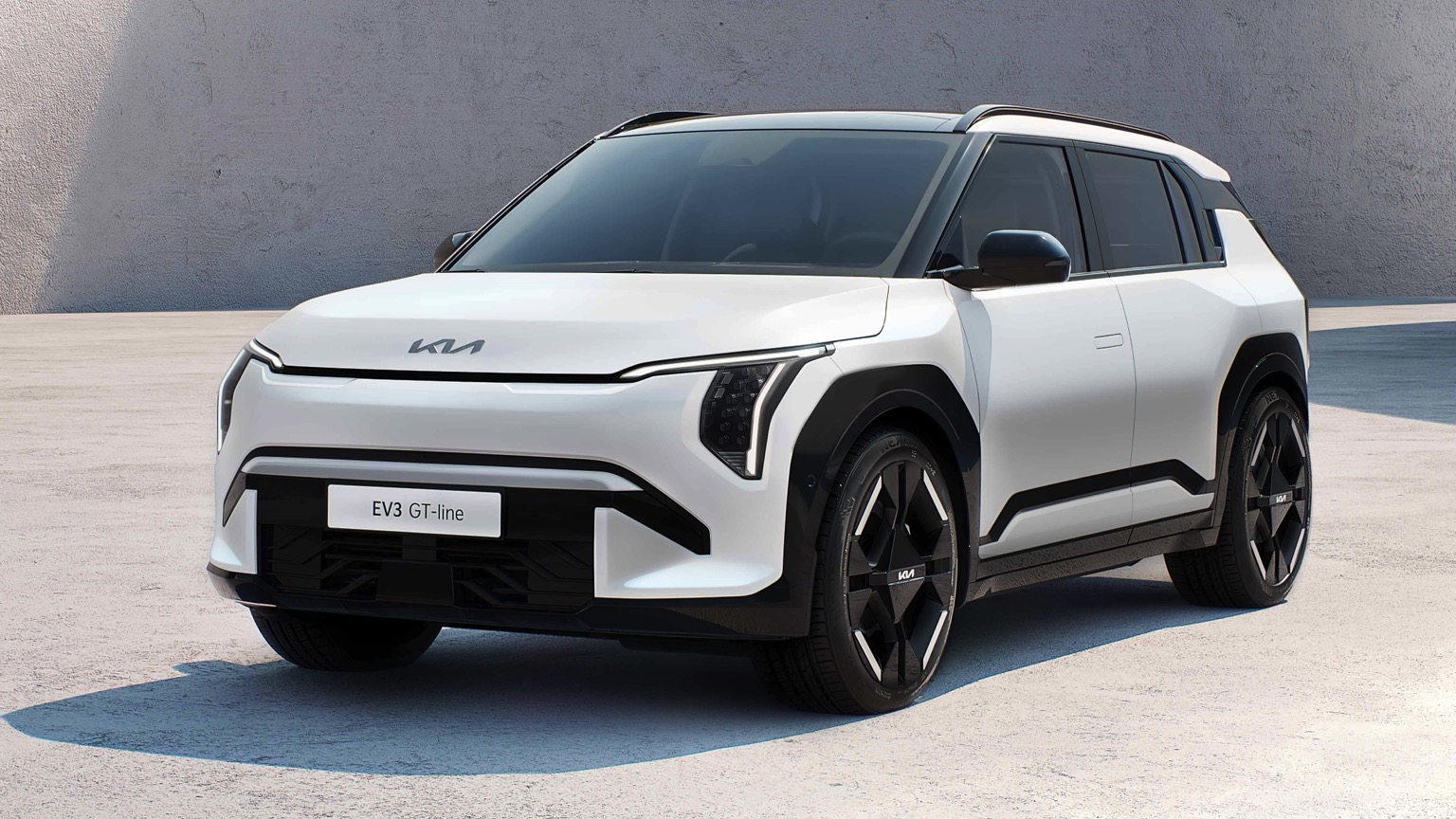If you’re still unsure whether electric vehicles have gone mainstream in the new car market, consider this: in 2024, nearly one in five new car buyers opted for an electric model.
While many of those purchases were made by businesses and company car fleets, it still reflects that thousands of individual customers chose to go electric.
Those customers now enjoy more variety than ever before, whether they’re in the market for a compact electric car, an electric SUV, or something that falls between the two.
There is also an expanding range of brands available whether shoppers prefer established names like Audi or BMW, newer electric-only brands such as Polestar.
With such a wide array of options, understanding which EVs truly shine. Our seasoned team of road testers has spent countless hours evaluating every new electric car on the market, concentrating on what really counts from ride refinement to driving range, and from acceleration to everyday usability.
EVs That Deliver Long-Term Value
That’s why our rankings of the best electric cars are grounded in one of the most comprehensive testing processes in the industry.
Renault 5
Our top choice is the 110kW Techno Comfort Range 52 kWh 5dr Auto, which accelerates from 0-62mph in 7.9 seconds, produces zero CO2 emissions, seats five, offers a 277-litre boot, and falls under insurance group 22E.
The Renault 5 may boast Instagram-friendly aesthetics and bold colour options, but it’s far more than just a stylish electric car.
In a segment filled with strong contenders, the Renault 5 stands out as a clear winner so much so that we’ve named it our 2025 Car of the Year.
Even the base model offers an impressive range of up to 193 miles, while the recommended 52kWh battery version extends that to 253 miles, which is more than enough for most users, particularly those with home charging capabilities.
Its charging speed is comparable to rivals like the Citroën ë-C3, Mini Cooper SE, and Peugeot e-208, taking a similar amount of time for a 10-80% top-up.
Inside, the Renault 5 features a comfortable, practical cabin equipped with a top-tier Google-based infotainment system that’s easy to use.
The inclusion of physical climate controls adds further convenience, making it easier to operate than competitors that rely solely on touchscreens or voice commands.
While taller passengers may find rear legroom slightly restrictive during longer trips, the boot is notably larger than what the Fiat 500 or Mini offers.
Affordability is another big plus. Even the highest-spec Renault 5 is priced below £30,000, making it over £1,000 cheaper than the entry-level Mini Cooper SE.
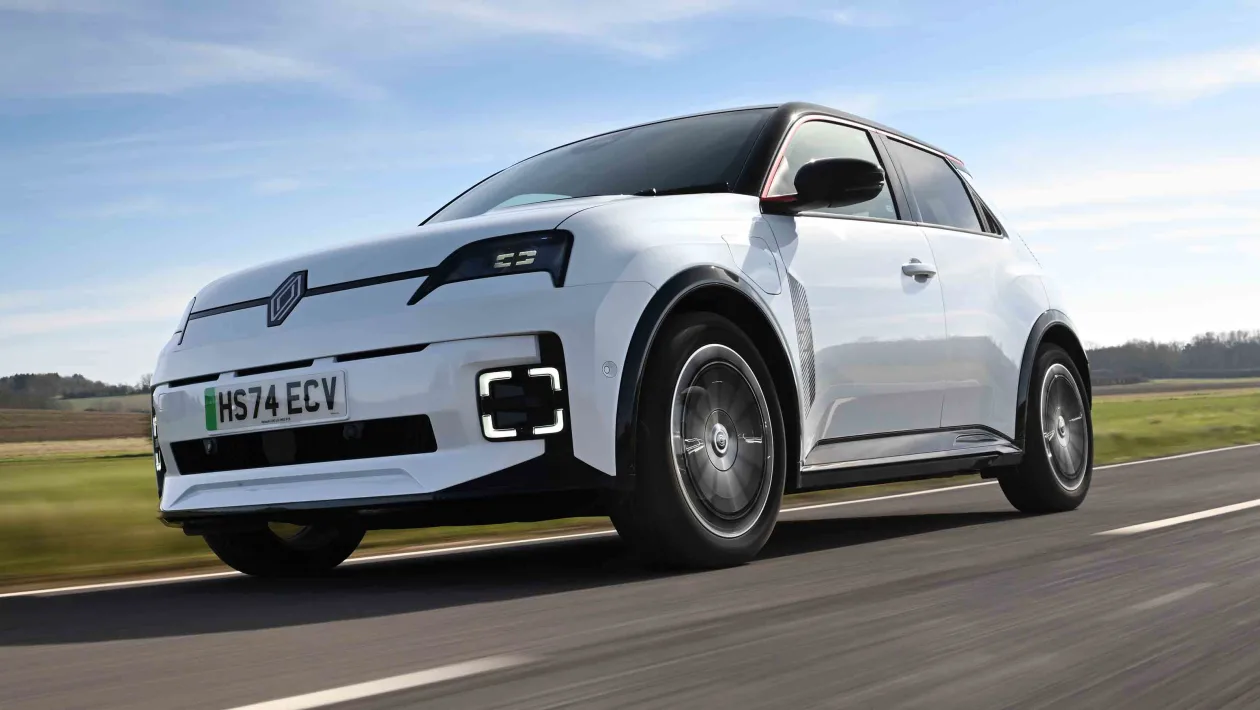
The Renault 5 isn’t the first classic car to make a comeback, but it has the potential to be just as successful as other modern reinterpretations, like the Fiat 500 and the Mini.
Originally a major hit in the small car segment during the early 1970s, the Renault 5 has been reimagined for today’s roads. While it now comes with modern updates in size and safety, it still stays true to its original promise: offering stylish, practical, and affordable mobility for the masses.
Perhaps the most notable transformation is what powers it. The original Renault 5 was engineered during the oil crisis to be fuel-efficient, but the latest version leaves petrol behind altogether. This modern incarnation is a fully electric vehicle, aligning with current trends and environmental priorities.
However, the Renault 5 isn’t launching into an empty field. It faces strong competition not only from fellow retro-inspired EVs like the Fiat 500e and Mini Cooper Electric but also from contemporary alternatives such as the Citroën ë-C3, Hyundai Inster, and Peugeot e-208.
Despite this, the Renault 5 has impressed enough to be named the 2025 Car of the Year. Its blend of range, driving quality, and pricing make it a very compelling choice for anyone looking to go electric without overspending.
According to our review, the best value comes from pairing the larger Comfort Range battery with the mid-level Techno trim, which delivers an ideal mix of features and affordability.
Overall, the Renault 5 delivers a comfortable ride, features an intuitive and well-built infotainment system, and is priced competitively. However, it’s not perfect. Rear legroom is a bit tight, there are no available discounts, and it’s worth noting that cheaper options exist, such as the Citroën ë-C3 and the Fiat Grande Panda Electric.
In terms of performance, the Renault 5 delivers a smooth and quiet driving experience, placing it among the better-driving EVs in its class.
The base E-Tech 120 version comes with a 121bhp motor powering the front wheels. Although we haven’t driven this specific version yet, its official 0–62mph time of 9.0 seconds suggests adequate performance for daily use.
The more powerful E-Tech 150 variant ups the motor to 148bhp and cuts the 0–62mph time to 7.9 seconds. While it still can’t quite match the Mini Cooper SE in terms of outright speed, it’s noticeably quicker than rivals like the Citroën ë-C3 and Hyundai Inster.
Another key benefit of the 150 model is its larger battery. Dubbed the Comfort Range, it offers 52kWh of usable capacity and an official WLTP range of up to 252 miles.
Meanwhile, the E-Tech 120 is paired with a smaller Urban Range battery, which holds 40kWh and delivers a range of up to 193 miles, depending on the trim level. Still, as with all EVs, it’s important to remember that real-world range will vary—especially in colder conditions where energy consumption increases.
All in all, the Renault 5 makes a strong case for itself as one of the most well-rounded small electric vehicles available today. Its retro charm is backed by modern performance and efficiency, proving that going electric doesn’t mean compromising on character or practicality.
Also Read: Top 10 Budget-Friendly & Luxury Trucks You Can Buy
Tesla Model 3
Our recommended pick for the Tesla Model 3 is the RWD 4dr Auto version. It goes from 0-62mph in 5.8 seconds, emits no CO2, seats five, has a generous 594-litre boot, and sits in insurance group 36D.
Since its launch in 2019, the Model 3 has consistently been one of our favourite electric vehicles. Thanks to a recent round of updates, it now sets a new benchmark for buyers seeking an electric car that competes with premium executive models.
The Model 3 offers a highly enjoyable driving experience, with more agile handling than rivals like the Kia EV6 and Polestar 2. It’s also exceptionally fast, especially in its Performance trim, and proves to be surprisingly practical for daily use.
The car’s ultra-minimalist interior may not suit everyone, as it lacks traditional buttons and switches, including the indicator stalk, which has been replaced by haptic buttons on the steering wheel. Still, the massive 15.4-inch central touchscreen is intuitive and easy to use.
Tesla’s competitive pricing and access to its ultra-fast and dependable Supercharger network further bolster the Model 3’s appeal, making it an easy recommendation for those looking for a reliable and well-rounded EV.
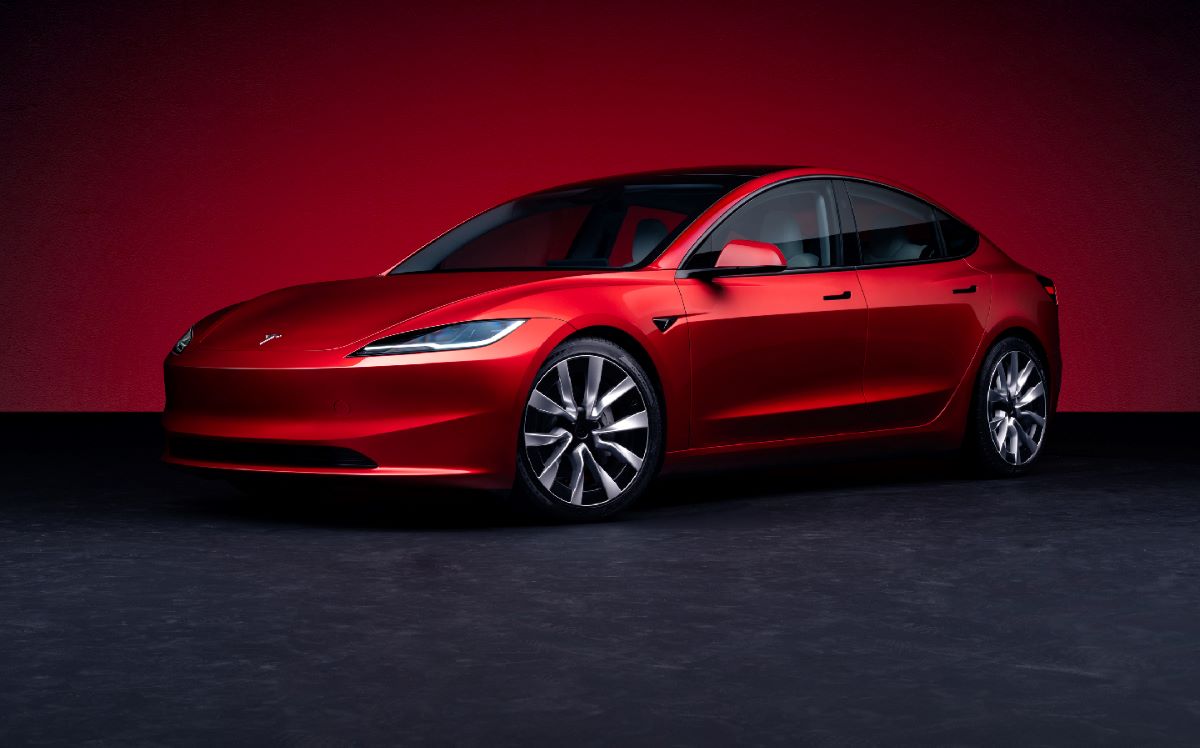
When it comes to driving range, the current Tesla Model 3 continues to set the benchmark in its class. According to the EPA, the Long Range Rear-Wheel Drive variant delivers an impressive 363 miles on a single charge.
We tested the more powerful Long Range All-Wheel Drive version, and it still achieved an impressive 338 miles in real-world conditions—slightly under the EPA’s 346-mile estimate, but nonetheless among the longest ranges you’ll find in an EV at this price point.
Beyond range, the Model 3 also delivers strong performance. The standard Long Range version accelerates from zero to 60 mph in just 4.2 seconds, while the top-tier Performance variant achieves the same in a blistering 3.0 seconds—putting it firmly in supercar territory.
There are a number of solid alternatives to consider if you’re cross-shopping EV sedans. The Hyundai Ioniq 6 stands out as a practical contender, offering competitive range and comfort, although its unique styling isn’t for everyone.
The BMW i4 offers a more premium experience, but with a higher price tag. If you’re open to SUVs, other options include the budget-friendly Chevrolet Equinox EV, the sleek and sporty Kia EV6, and the compact but tech-forward Volvo EX30. Tesla’s own Model Y is also worth considering, though it hasn’t yet received the same set of updates recently applied to the Model 3.
Kia EV3
Our recommended version of the Kia EV3 is the 148kW Air 58.3kWh 5dr Auto, which goes from 0-62mph in 7.5 seconds, emits zero CO2, seats five, offers a 460-litre boot, and falls into insurance group 34D.
As Kia’s most compact and affordable electric SUV, the EV3 benefits from the legacy of its well-regarded siblings the Kia EV6, a former What Car? Car of the Year, and the spacious EV9, one of our favourite seven-seater EVs.
Right from the outset, the EV3 impresses. Even the entry-level models can officially travel up to 270 miles on a single charge, while the Long Range version boosts that to an exceptional 375 miles outperforming key rivals such as the Hyundai Kona Electric, Mini Aceman, and Smart #3.
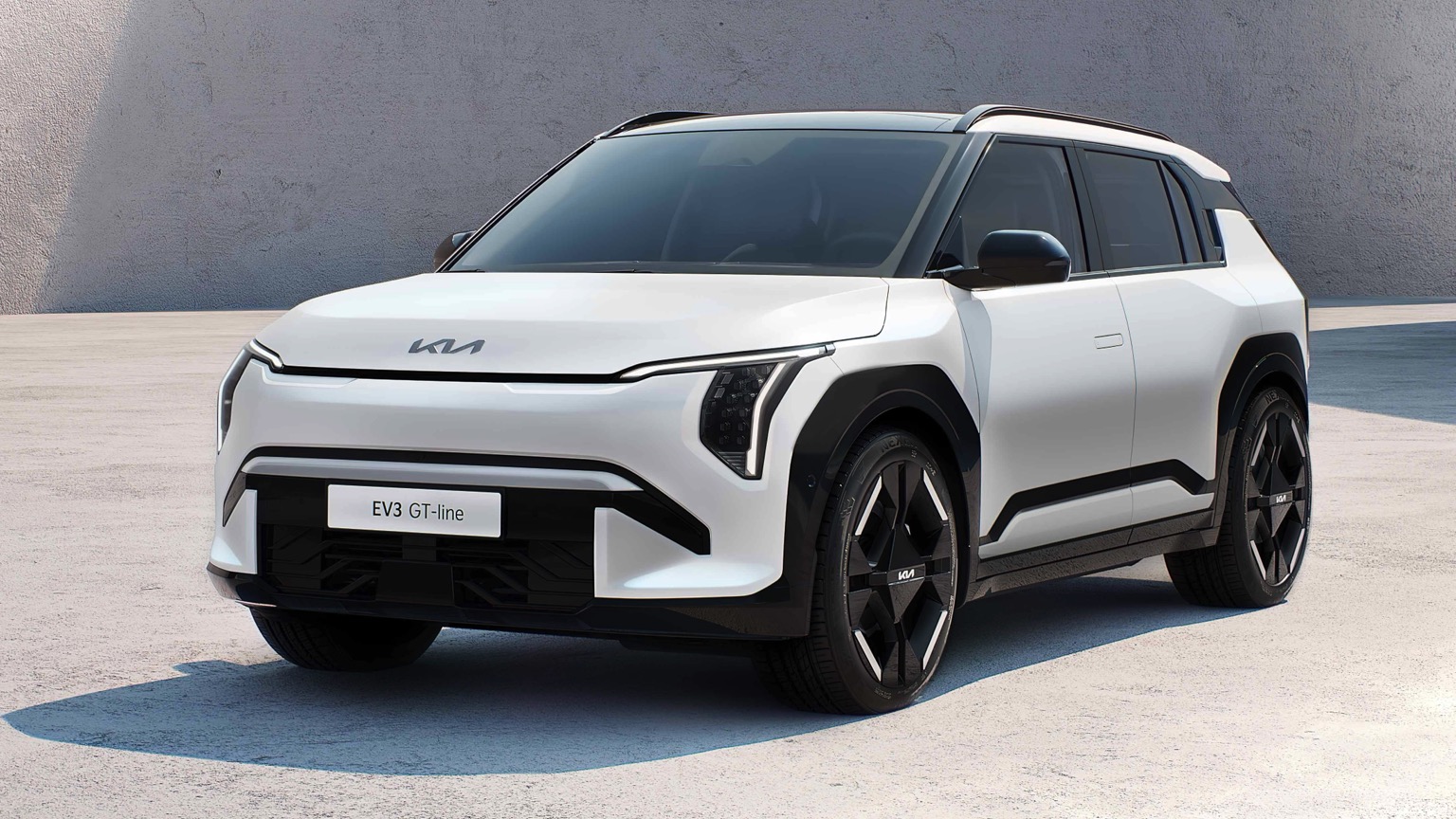
In terms of cargo space, the EV3 equals the Kona Electric and surpasses the Aceman, managing to accommodate six carry-on suitcases, just like the Skoda Elroq.
Speaking of the Elroq, the EV3’s interior features physical climate controls, which make it easier to adjust settings on the move a user-friendly touch that’s absent in some competitors.
The infotainment system is intuitive, and the raised driving position adds to the SUV appeal for many buyers.
In urban environments, the EV3’s soft suspension smooths out imperfections in the road with ease. However, this comes at the cost of agility, as the car feels less nimble and exhibits more body roll in corners compared to some rivals.
Skoda Elroq
Our top pick is the 150kW 60 Edition 63kWh 5dr Auto, which accelerates from 0-62mph in 8 seconds, produces zero CO2 emissions, seats five, has a boot capacity of 470 litres, and is in insurance group 27E.
The Skoda Elroq earns its place as Britain’s best family electric SUV, and rightly so it closely matches the size and feature set of the Skoda Karoq, one of our top-rated petrol-powered family SUVs, while bringing all the benefits of electric mobility.
Even the entry-level version with 168bhp feels lively enough, and the car’s standard suspension handles road imperfections effectively.
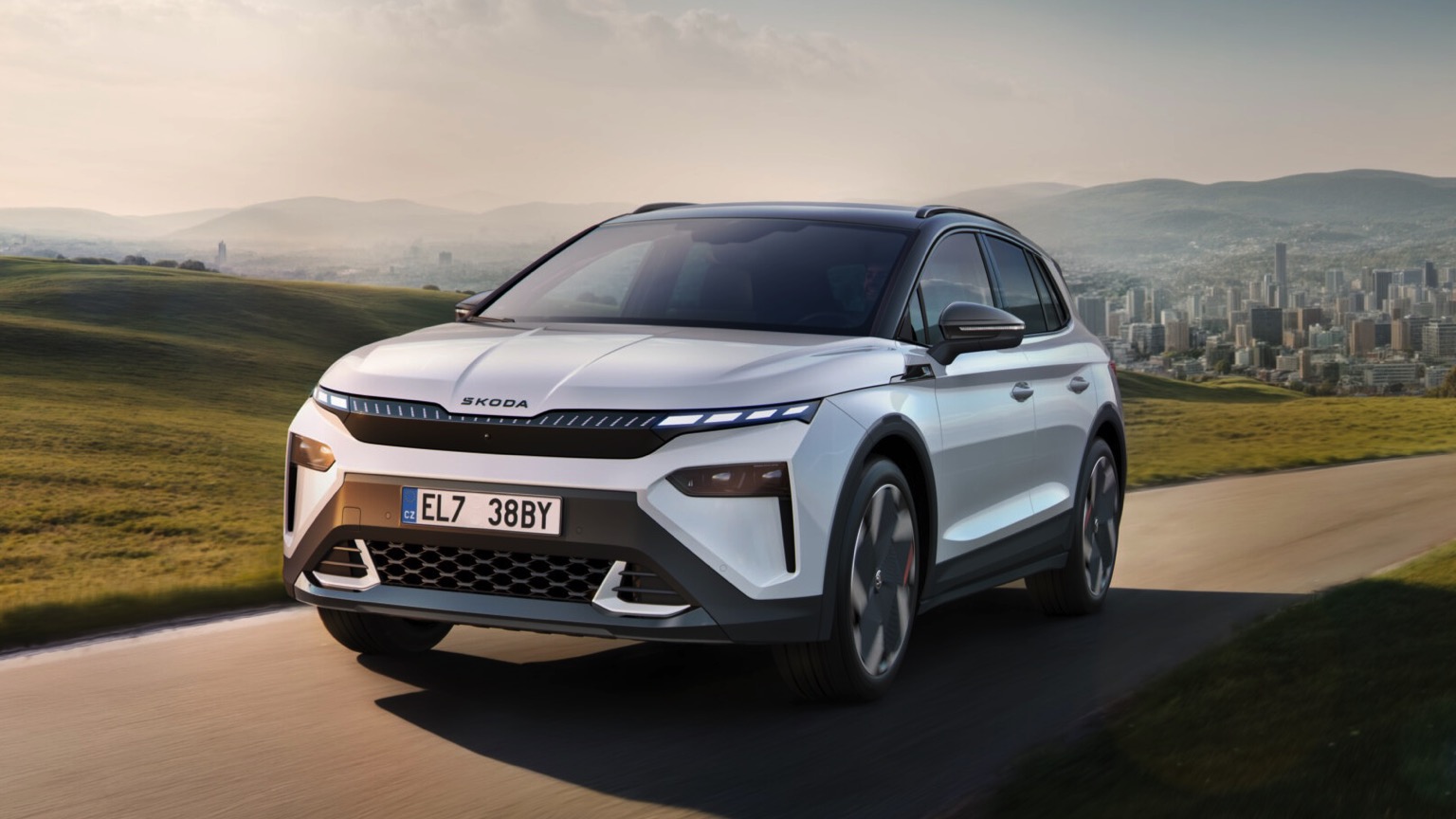
For a family SUV, the Elroq drives with impressive composure, featuring accurate and well-weighted steering. Unfortunately, like the Cupra Tavascan, the braking system lacks a strong sense of feedback, which slightly undermines an otherwise excellent driving experience.
Inside, the seating position isn’t quite as elevated as in the Tesla Model Y, but the cabin remains spacious enough to accommodate adults comfortably.
Its practicality is a highlight we were able to fit six carry-on suitcases in the boot, which should cover most family trips with ease. That said, the Renault Scenic did manage to fit one more case in our luggage test.
Volkswagen ID Buzz
The Volkswagen ID Buzz earns high marks across the board for reliability, safety, cost-efficiency, quality, and performance. While its styling heavily leans on nostalgic appeal, Volkswagen has not cut corners with the ID Buzz’s engineering.
Instead, the brand has poured resources into creating a vehicle that successfully blends the versatility of an MPV, the luxury of a premium SUV, and the efficiency of a fully electric powertrain.
Behind the wheel, the ID Buzz surprises with its performance, easily accelerating to motorway speeds faster than many traditional SUVs including the 1.5-litre petrol Volkswagen Tiguan.
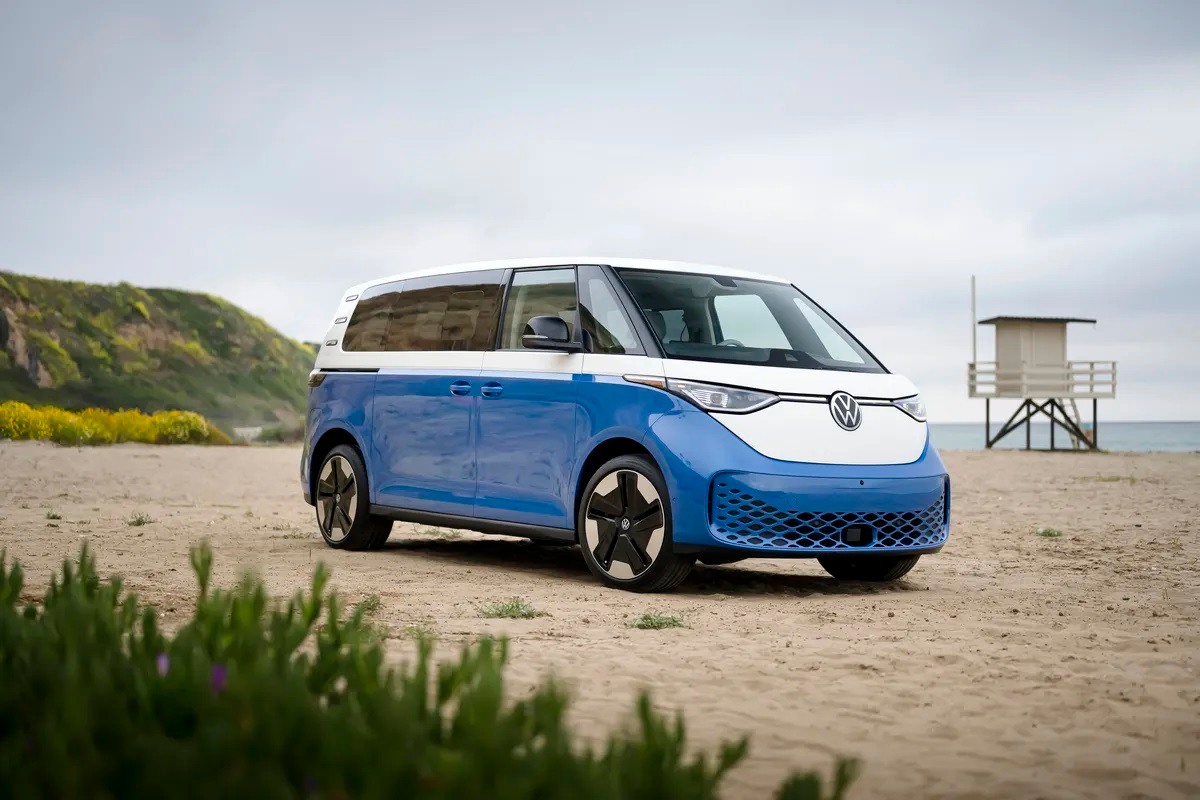
In terms of space, it’s a standout, offering considerably more passenger and cargo room than high-end electric SUVs like the Jaguar I-Pace or Tesla Model Y.
The LWB (long-wheelbase) version is particularly impressive, ranking among the most spacious vehicles available in any category.
Despite its many strengths, the ID Buzz isn’t perfect. The infotainment and air-con controls can be awkward to use, and its energy efficiency could be better. Additionally, the LWB variant doesn’t ride quite as smoothly as the SWB (short-wheelbase) version.
Also Read: 5 Cars With Supportive Seats and 5 That Hurt Your Back
EVs That Depreciate Quickly
How well electric vehicles retain their value largely depends on the specific model and its overall desirability. EVs that depreciate more rapidly often lack the widespread appeal of their more desirable counterparts.
Overall, electric vehicles tend to have the highest depreciation rates compared to other major types of vehicles.
Most EVs lose over 49 percent of their value within five years, whereas the average depreciation across the entire automotive industry is under 39 percent over the same period.
Mercedes-Benz EQS
The Mercedes-Benz EQS is one of the most enticing examples of a luxury electric sedan you’ll find, but it also experiences the highest depreciation among its class, with a one-year depreciation rate of 47.8 percent.
Thankfully, choosing the EQS means you’re likely not planning to trade or sell it any time soon. This premium sedan offers everything needed for an exceptional driving experience.
Equipped with a 108.4 kWh battery, it delivers 355 horsepower and 590 lb-ft of torque through a rear-wheel-drive setup, achieving a driving range of 352 miles.
Charging takes around 12.5 hours. Inside, the EQS feels like a digital lounge, featuring a massive 56.0-inch Hyperscreen that spans the dashboard and some of the most comfortable seating available in any vehicle.
This is the kind of EV you’ll enjoy driving anywhere. Its real-world EV range is impressive, and it comes loaded with standard features and cutting-edge in-car tech, all wrapped in a well-appointed, comfortable interior.
However, the rear passenger space is underwhelming given the vehicle’s size, it’s pricier than some competitors without offering superior performance, and its urban driving dynamics could be improved.
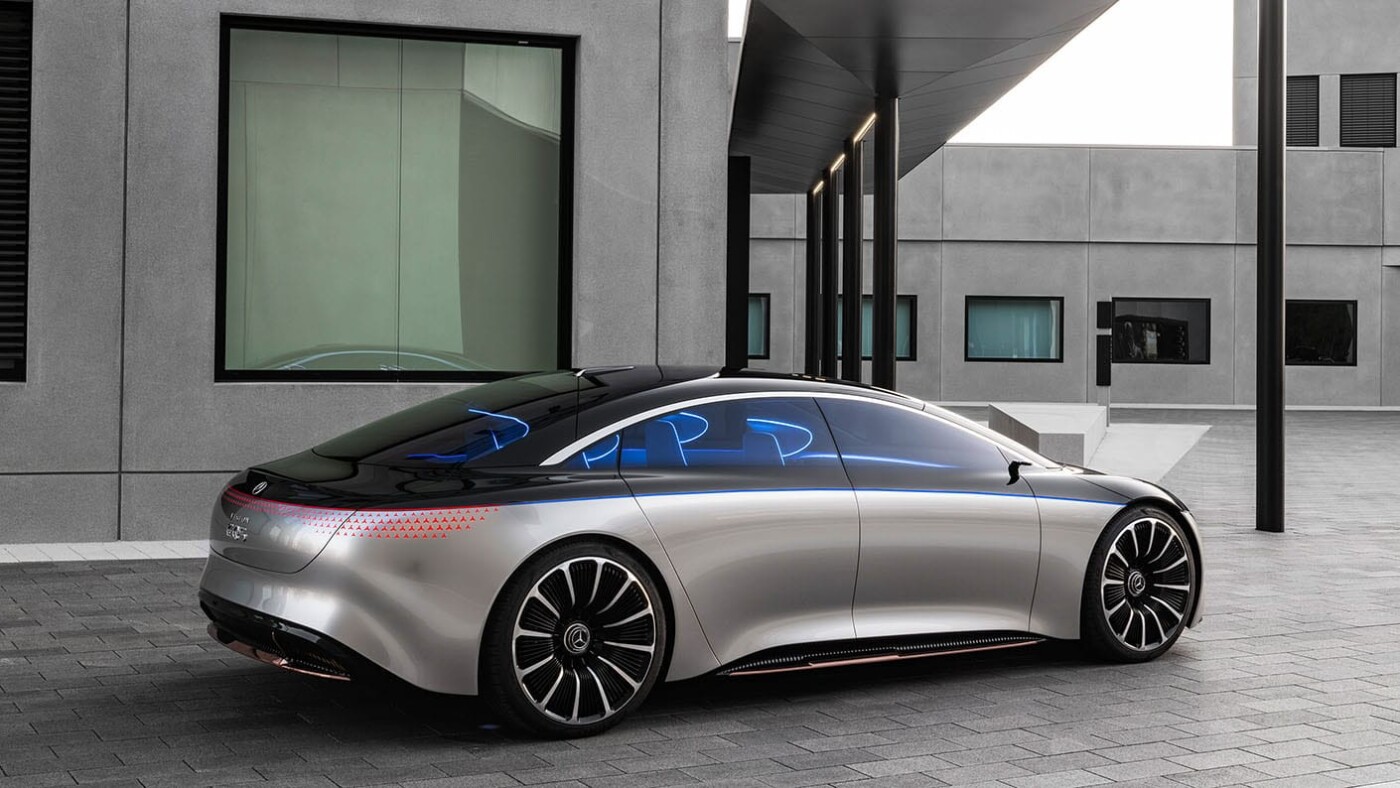
Some of the updated Mercedes-Benz EQS’s competitors are truly raising the bar when it comes to extracting maximum range from large electric saloons.
While the UK market still awaits right-hand-drive versions, the Lucid Air has already been available in North America for two years, offering over 500 miles of range.
Meanwhile, China’s Nio ET7, which features a 150kWh semi-solid-state battery, has become the first electric production car certified to achieve more than 1000km (621 miles) on a single charge.
These breakthroughs put significant pressure on the EQS to remain competitive in an increasingly demanding market.
Originally launched in 2021, the EQS was Mercedes-Benz’s ambitious response to the Tesla Model S and an effort to bring its traditional S-Class buyers into the electric age.
Despite the bold intent, the EQS has yet to fully deliver on those expectations. It has consistently trailed the internal combustion S-Class in sales, and global demand for both models has slumped enough that Mercedes has scaled back production at its Sindelfingen plant from two shifts a day to just one.
In a bid to revive interest and performance, Mercedes has focused on boosting the EQS’s battery and range for 2025.
The main change for the 2025 model year involves the battery system. Where earlier versions of the EQS offered just one battery pack, there are now two nickel-manganese-cobalt options. The larger of the two boasts 118kWh of usable capacity, while the smaller 96kWh version is reserved for the entry-level EQS 350.
This upgrade represents a near 10% increase in capacity compared to the launch model. As a result, the WLTP combined range climbs to as much as 481 miles, depending on the model and configuration.
However, in the more conservative North American EPA test cycle, the figure comes in at 390 miles — an improvement, but not enough to seriously challenge high-range rivals like Lucid. Still, for a mid-cycle refresh, this is about as much progress as one can expect in terms of extending EV range.
The revised EQS still has strengths and weaknesses. It now comfortably exceeds 300 miles in real-world range, and its cruising refinement and ride isolation are commendable. Its digital cabin technology, while futuristic, remains user-friendly.
On the downside, the rear seat experience isn’t quite as luxurious as what you’d find in a BMW i7, and the ride quality suffers slightly on twisty country roads.
Additionally, the EQS’s 400V electrical architecture results in slower rapid-charging speeds than some of its rivals. Stylistically, the EQS continues to stand out with its bold, spaceship-like design — a polarizing but undeniably unique visual identity.
Yet it remains as heavy as it is aerodynamic, limiting some of its handling dynamics. Overall, while the EQS hasn’t become the definitive electric luxury sedan, its improvements make it a more compelling option than before.
Kia EV6
If you’re looking for a vehicle that captures the thrill of electric SUV driving, the Kia EV6 is a compelling choice even though it depreciates quickly, with a one-year rate of 33.6 percent.
This EV is built for long-term enjoyment, offering a blend of practicality and driving fun. The EV6 is powered by a 77.4 kWh battery producing 320 horsepower and 446 lb-ft of torque, paired with all-wheel drive.
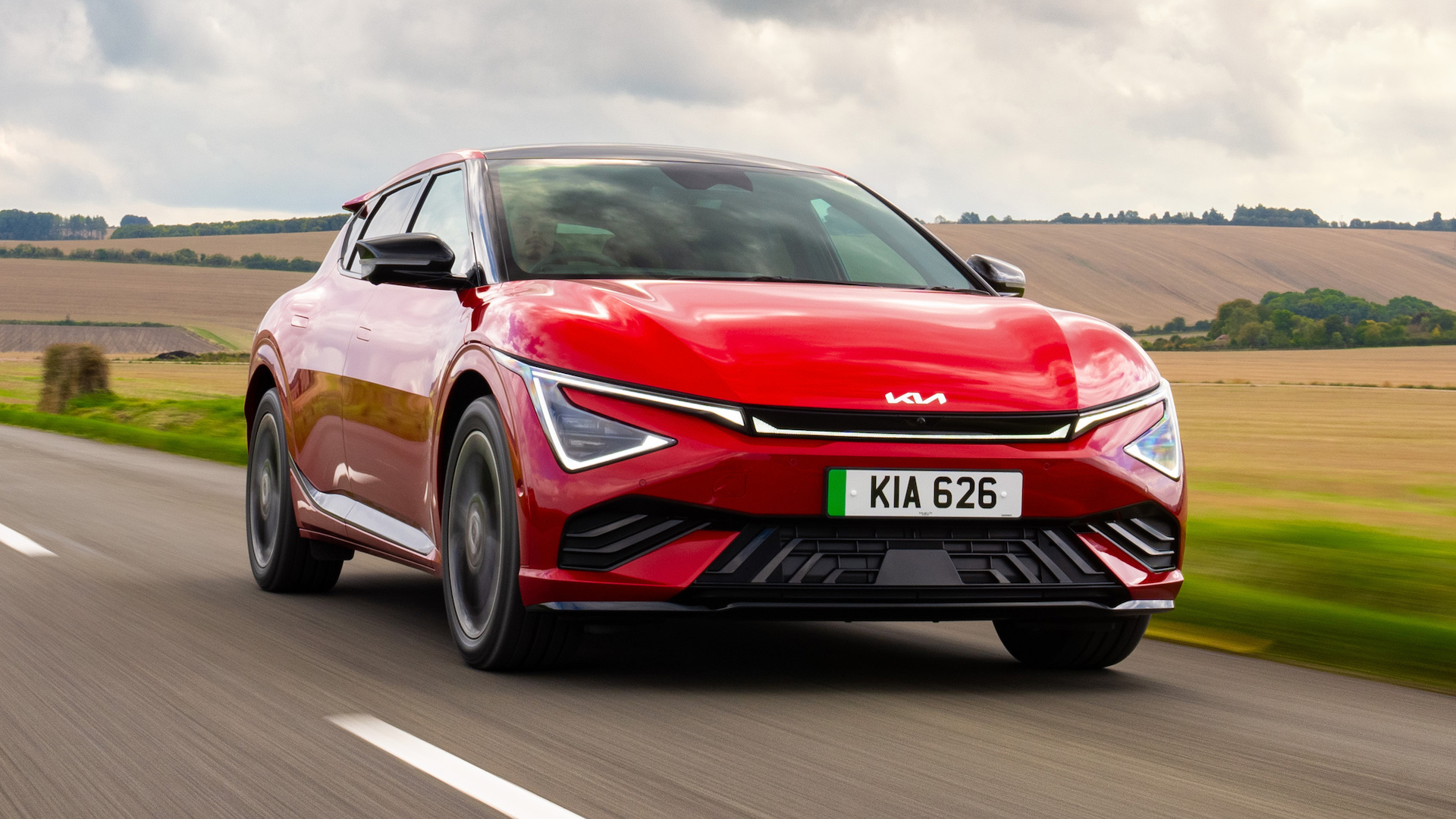
It delivers a range of 282 miles and takes around 8.4 hours to fully charge. This Kia impresses with quick acceleration, sporty handling, and a cabin that’s spacious in both the front and back.
It’s compatible with the latest high-rate charging stations, enhancing its usability. The EV6 might not have the largest cargo space compared to other electric SUVs, and visibility from the front and rear isn’t perfect.
Some of the driver assist features could also operate more smoothly. Still, if you want an electric SUV that’s both fun and practical, the EV6 remains a solid contender.
Hyundai Ioniq 5
The Hyundai Ioniq 5 sets itself apart from other electric vehicles without sacrificing practicality or appeal. It stands out with a bold design that it wears confidently, making it an attractive option for those who want an EV with personality.
If you’re looking for an electric vehicle that’s both enjoyable and doesn’t take itself too seriously, this Hyundai is an excellent pick even though it depreciates by 32.9 percent within the first year.
The most popular configuration comes with a 77.4 kWh battery, rear-wheel drive, 225 horsepower, and 258 lb-ft of torque, providing a driving range of 303 miles. Charging time is approximately 8.5 hours.
To fully enjoy what this electric SUV offers, the SEL trim is highly recommended. It combines power and practicality with desirable features like a heated steering wheel, auto-dimming rearview mirror, and parking sensors at both the front and rear.
The Ioniq 5 excels with its quiet and comfortable ride, user-friendly cabin layout, and rapid charging capabilities.
However, it does come with a few drawbacks, including thick rear roof pillars that hinder visibility, smaller-than-average cargo space for its class, and the lack of wireless Android Auto and Apple CarPlay connectivity.

The Hyundai Ioniq 5, even four years after its debut and following a major update in 2024, continues to stand out as one of the most visually distinctive electric cars on the market. Its design draws inspiration from 1970s hatchbacks but delivers the kind of interior space and practicality that comes close to that of a large SUV.
Positioned as a competitor to vehicles like the Volkswagen ID.4, Skoda Enyaq, and Tesla Model Y, the Ioniq 5 offers a unique take in a crowded segment.
Despite its retro-inspired looks, the Ioniq 5 is actually quite sizable — roughly on par with a Volvo XC60. However, the design does a clever job of concealing its dimensions, making it appear smaller than it really is.
It’s reminiscent of the famous Father Ted gag: it’s not small — it just looks like it might be far away. That substantial size translates into excellent passenger space, though the luggage capacity may fall a little short of expectations.
Inside, the cabin reflects the bold exterior with an equally dramatic design that includes two large screens mounted high on the dashboard.
The interior strikes a balance between minimalism and functionality — it’s pared back without feeling empty. Hyundai has also retained physical buttons for key functions, which enhances usability and makes navigating the infotainment system much easier than in many competing EVs.
There’s a comfortable, lounge-like atmosphere inside the Ioniq 5, supported by large, supportive seats — some of which recline like armchairs in higher trims — and a center console that can slide back and forth to suit the driver or passenger’s needs.
While not every material inside feels top-tier (the chunky gear selector located behind the steering wheel, for instance, has a slightly awkward feel), the overall build quality is solid and well-executed.
Drivers of all sizes should be able to find a comfortable seating position with ease, although the steering wheel could benefit from a bit more adjustability.
Up front, there’s a wealth of practical storage, with space for everything from coffee cups to full-sized laptop bags. Overall, the Ioniq 5 continues to deliver a compelling blend of style, comfort, and practicality in the electric vehicle market.
Volkswagen ID.4
The Volkswagen ID.4 brings a familiar, approachable feel to the electric vehicle market. As one of the first mainstream electric SUVs, it helped pave the way for others and continues to offer a satisfying driving experience.
That said, it also depreciates quickly, with a 32.9 percent drop in value within one year. The most popular version uses a 62.0 kWh battery, rear-wheel drive, 201 horsepower, and 229 lb-ft of torque, achieving a driving range of 206 miles and a 6.0-hour charging time.
While the base battery is still the most popular, Volkswagen offers a larger battery pack that adds power, boosts range, and allows for an all-wheel-drive option. A 12.9-inch infotainment display is found in most trims.
The ID.4 is equipped with many standard driver assistance and tech features, offers a smooth ride, and has a roomy cabin. Its compact turning radius makes city driving and parking easier.
However, it’s held back by some difficult-to-use controls, a few cheap-feeling cabin materials, and a driving experience that’s not as engaging as that of rival EVs.
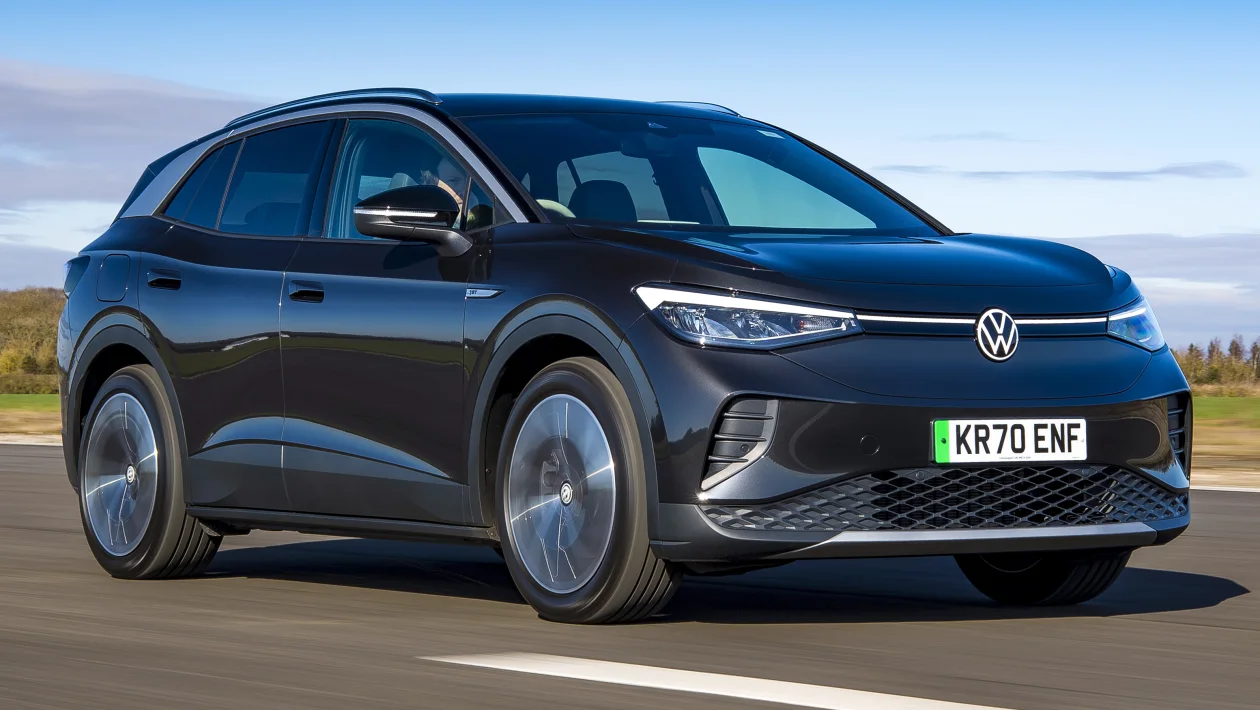
The 2025 Volkswagen ID.4 electric SUV continues to embrace a clean, modernist design, complemented by a spacious and thoughtfully arranged interior.
Though slightly shorter and lower than its gas-powered sibling, the Volkswagen Tiguan, the ID.4 takes advantage of its all-electric powertrain to offer solid performance and a respectable driving range.
The base model features a 201-horsepower, single-motor setup with rear-wheel drive, capable of delivering up to 206 miles of EPA-estimated range.
Stepping up to the mid-tier variant provides a more robust 282-horsepower, single-motor rear-drive system paired with the larger of two available batteries, boosting range significantly to 291 miles per charge.
For those seeking more power, the 335-horsepower dual-motor all-wheel-drive version is the top-tier performer, also utilizing the larger battery and offering a slightly lower, but still solid, 263 miles of range.
Although the ID.4 is now one of the more established electric vehicles in the segment, it remains competitive thanks to its DC fast-charging capabilities — even if it doesn’t match the charging speeds of newer rivals such as the Hyundai Ioniq 5 or the Ford Mustang Mach-E.
Still, the ID.4 stands out as one of the more affordable options among electric SUVs, though the recently introduced Chevrolet Equinox EV is beginning to edge it out in terms of price. Its balance of practicality, price, and performance has earned the ID.4 a spot on the 2025 Editors’ Choice list.
In the competitive field of electric compact SUVs, the Volkswagen ID.4 currently ranks fifth, trailing the Hyundai Ioniq 5 N, Hyundai Ioniq 5, Kia EV6, and Ford Mustang Mach-E, while staying ahead of the Chevrolet Equinox EV. Pricing for the ID.4 starts at $42,000, positioning it well within reach for EV buyers looking for value without significant compromises.
For 2025, the ID.4 receives several minor updates following more substantial revisions in the 2024 model year that included a revamped infotainment system, upgraded software, and performance improvements.
All versions equipped with the 58.0-kWh battery — the smaller of the two — now feature a 12.9-inch touchscreen display with backlit sliders as standard. Meanwhile, the S trim with this battery pack also gains standard ventilated front seats.
Both the S and S Plus trims are now available with an optional Black Package, which adds black mirror caps, door handles, badges, and 20-inch black aluminum wheels for a sleeker, sportier appearance. The S Plus trim further includes an auto-dimming driver’s side door mirror, rounding out the updates for the new model year.
Ford Mustang Mach-E
Among all one-year-old EVs, the Ford Mustang Mach-E sees the fastest depreciation, losing nearly 30 percent of its value specifically, 29.8 percent during its first year on the road.
Despite this drop, many owners may not mind, since the Mach-E combines the excitement of a Mustang with the practicality of an electric SUV.
It remains a solid option thanks to its blend of fun, performance, and everyday usability. The most popular version includes a 72.0 kWh battery, all-wheel drive, 311 horsepower, and 427 lb-ft of torque, offering 290 miles of range and a 10.0-hour charging time.
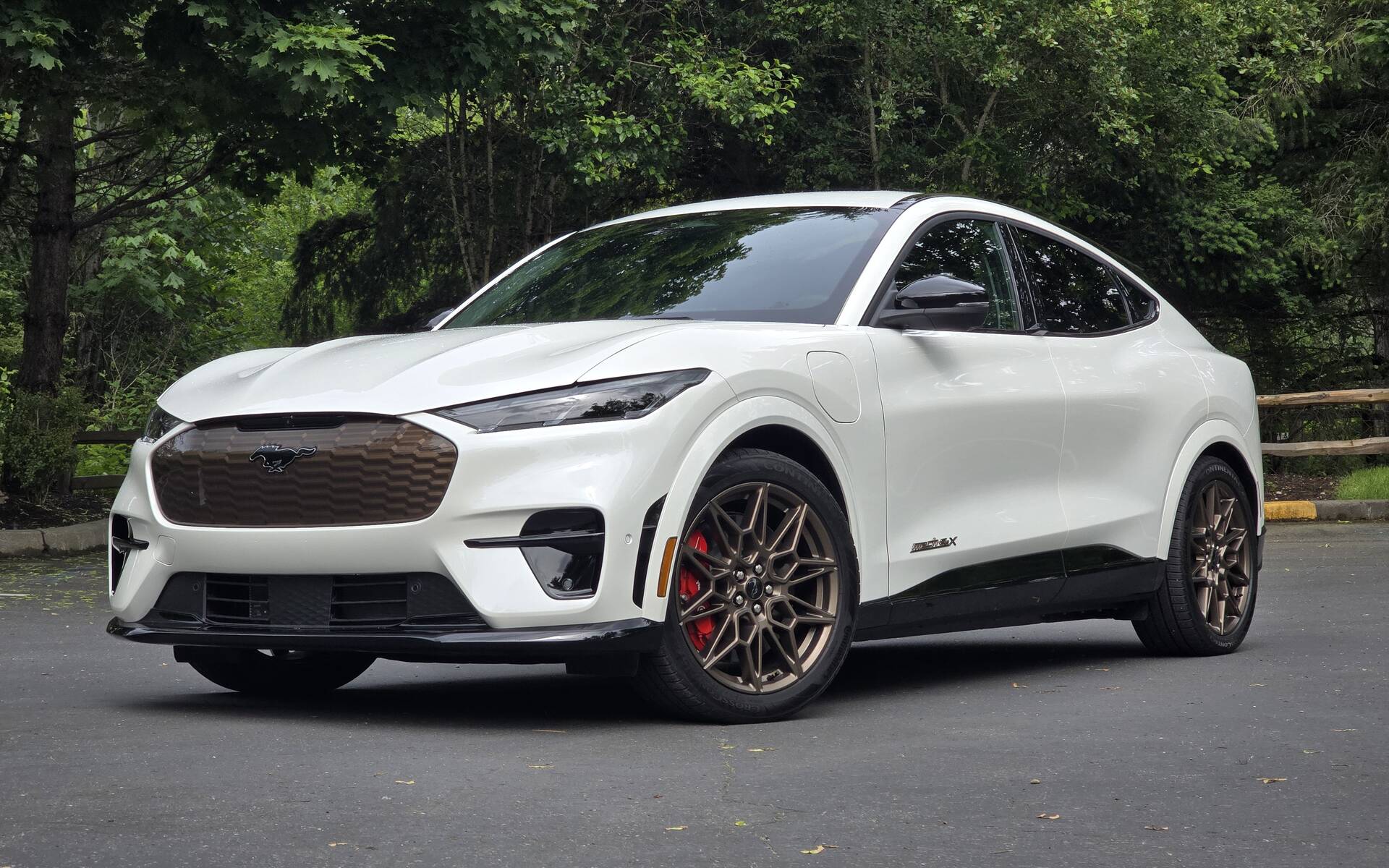
The Mustang legacy sets high expectations, and the Mach-E lives up to them sometimes even outperforming the classic gas-powered Mustang in speed.
This quirk adds to the EV’s charm. It delivers sporty acceleration and agile handling, especially in the GT trim, while offering an ample driving range and a user-friendly central touchscreen.
However, the Mach-E has its shortcomings, including a limited range of seat adjustments in the front, a slightly harsh ride on uneven surfaces, and a driving feel that doesn’t quite match the thrill of the traditional Mustang muscle car.

